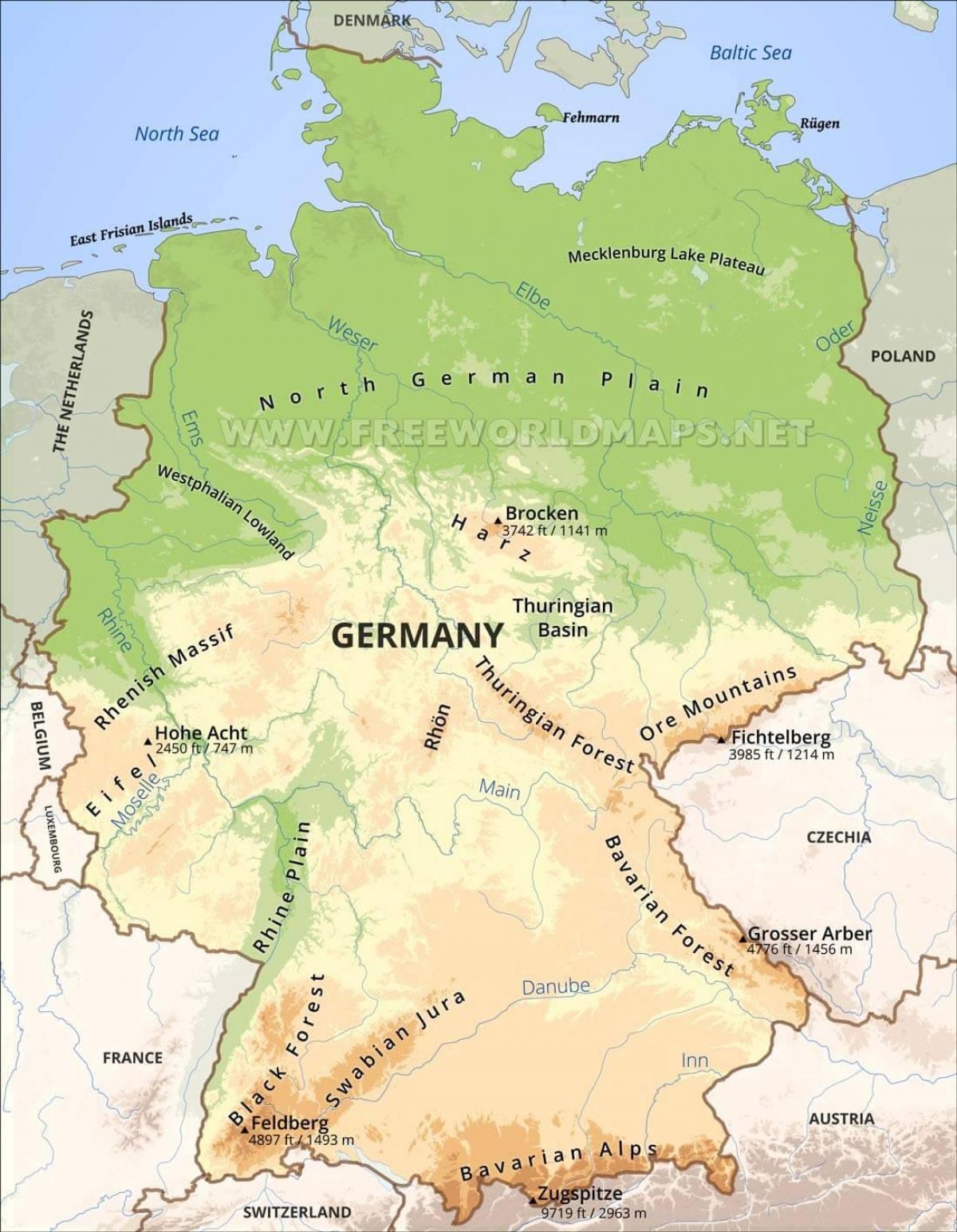search
Germany topographic map
Map of Germany topographic. Germany topographic map (Western Europe - Europe) to print. Germany topographic map (Western Europe - Europe) to download. As observed on the physical map of Germany, the country topography varies significantly from north to south. The North European Plain extends across the northern reaches of the country; this flat, lowland terrain is dissected by numerous bogs, rivers and streams, and is mostly used as farmland. The North Sea coastline is low, marshy wetland, with dikes, mudflats and scattered islands. The Baltic Sea is hillier with some jagged cliffs. Rugen, Germany largest island, is forested and rather hilly with steep cliffs and sandy beaches. In the northeast, and then stretching to the south of Berlin, Germany's land remains sandy and punctuated by dozens of mostly small lakes formed by retreating glaciers during the last Ice Age.
The land then rises into the forested uplands of central Germany. Major landforms here include the volcanic in origin Harz Mountains and the thickly wooded Rothaargebirge Mountains. Further south the rounded hills and mountains of the Eifel and Huynsruck uplands front the Rhine River Valley. Moving eastward through Germany, the Vogelsberg Mountains, Rhon Plateau (or Mts.) and Thuringian Forest are the dominate features. The uplands continue eastward, eventually rising into the Ore Mountains on the Czech Republic border as its shown in Germany topographic map. In the far south the land remains mostly hilly, with heavily forested mountains. The Bohemian Forest covers a lower mountain range along the Czech Republic border, and along the country's far-southwestern border with the Rhine River and France stands the thick (story-book famous) Black Forest.
The Bavarian Alps, the highest mountains in Germany stretch across its southern border with Austria. Snow-covered Zugspitze, Germany highest point is found here. It is 2,962 m (9,718 ft) tall and has been marked on the map by a yellow upright triangle as its mentioned in Germany topographic map. Stretched along the northern coastline, the Frisian Islands, East and North are separated from the mainland by the Waddenmeer. These barrier islands provide a small level of protection from the North Sea. As observed on the map above, the country is drained by dozens of rivers. The longest river in Germany is the Rhine. Rising in the Alps of Switzerland, it is overall length runs (820 miles) (1,319 km), and along it path numerous tributaries and branches stretch in all directionsAnother river of note is the Danube, which rises in the Black Forest to then stretch across central Europe all the way to the Black Sea. The largest lakes include Chiemsee and Muritz, and Lake Constance along the Swiss border in the south.


